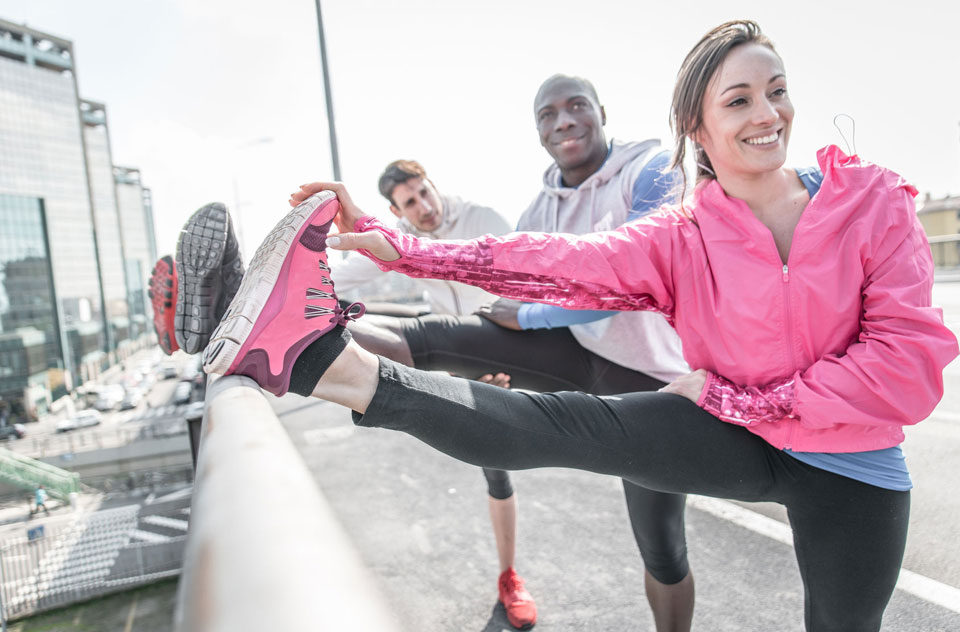If you’ve ever studied the dynamics of team behaviour, you know that teams often resemble love matches that turn into marriages. It’s love at first site. Collective enthusiasm is driven by shared passion, but as time passes and personalities reveal themselves, only couples with solid foundations and excellent communication skills are likely to stand the test of time.
Are you interested in either joining an existing team or have you been thinking of putting a team together because you are intrigued by the artistry and challenge of running relays like the upcoming ASICS Relay Singapore?
This article can help you get off on the right foot — literally and figuratively.
Which is better for your personality — solo or social?
It’s important to know yourself well enough to figure out whether you will be simpatico. Our five Ps can help you decide if you’re a team person or if it’s best to continue running solo:

Practice
Lone runners: Practice anytime you like and wherever you like; it’s up to you to determine the distance as well.
Social runners: Practice when it’s convenient for all because you’re perfectly comfortable with group decisions.
Performance
Lone runners: You are so self-motivated, you don’t need anyone else to keep you going.
Social runners: You’ve learned that you are more challenged if you train, condition and practice with others.
Protocols
Lone runners: You like to decide which competitions to run and which ones to skip.
Social runners: You are always willing to let the team decide which races to run.
Partnerships
Lone runners: You are easily annoyed with runners who don’t perform to your standards.
Social runners: The support and encouragement team members bring easily offset their shortcomings.
Psychology
Lone runners: There’s nothing about running with others that adds to your mental or physical performance.
Social runners: Everything about the psychological edge you get from being a team member enhances your life.
So, you want to join the team
You hear the word “teamwork” everywhere: at work, when you socialise and maybe at home when your spouse insists that you’re not holding up your share of responsibilities! You also know that teamwork is at the very heart of the running group you intend to join and you don’t mind compromise. Sounds like you’re ready to find a home.
Where to look? We don’t have to tell you, right? We’re your conduit to running teams so you may as well start with us. Of course, if you’re seeking a specialised niche – for example, you want to be part of a relay team – some of the places you should look are community bulletin boards, running club websites and social media.

Want to run relays?
Relay races are running events that require team members to hand off a baton as quickly as possible so each runner contributes to the team’s total finish time. The baton hand-off is no easy accomplishment, which is why teams work as doggedly on them as they do on synchronised running skills.
Participants often use an audible cue like “stick” to notify the next runner of an impending hand-off, because dropping the baton can disqualify all team members.
Baton drops aren’t the only issues relay runners worry about: If the baton is passed improperly (e.g., outside the exchange zone); if a competitor uses the pass to overtake a competitor or if there’s other interference, a team can be disqualified.
By the way, there’s plenty of variety on the relay running scene: long-distance events, medley relays (runners travelling progressively longer distances) and there are a dizzying number of distances from which to choose that run from 100 to 1600 metres.

How to fit in from the get-go
Whether the relay team you are invited join is new or it’s been around for a while, it can be easier to gain acceptance if you follow these tips:
- Listen more and talk less, especially if you have been picked to replace a team member.
- Don’t be afraid to ask questions. For example, if the team is running the ASICS Relay and you need help fitting in, learn all you can about the rules and regs.
- Don’t offer advice. Existing groups tend to be sensitive about unsolicited advice; save it until you are fully integrated into the team.
- Don’t miss team practice unless a family or work crisis prevents you from being there. This is particularly critical just before a competition when last practices are all about smoothing out bumps.
- Deal with issues immediately. It’s human nature to avoid conflict but it’s also human nature to obsess about slights, tiffs and misunderstandings. Get it out the minute an issue arises. You’ll be glad you did!

And if you are ready to add a new team member…
- Your best friend might not be your best teammate. Try running with him first to match your chemistry and understanding before forming a team.
- Audition more than one candidate for your team so you have several choices.
- Think about a trial period before you commit. Make it a six-month audition to see if he or she is a good fit.
- Make sure all members are in agreement about adding the new member once this trial period ends.
- Welcome new teammates. Encourage questions. Explain why your team functions the way it does.
- Cull a bad apple early if he or she fails to abide by rules, misses practice and otherwise disrupts team harmony. The longer you wait, the harder it gets.
Have you thought about joining a running team but something has held you back from making the commitment? Can you identify what’s stopping you?




